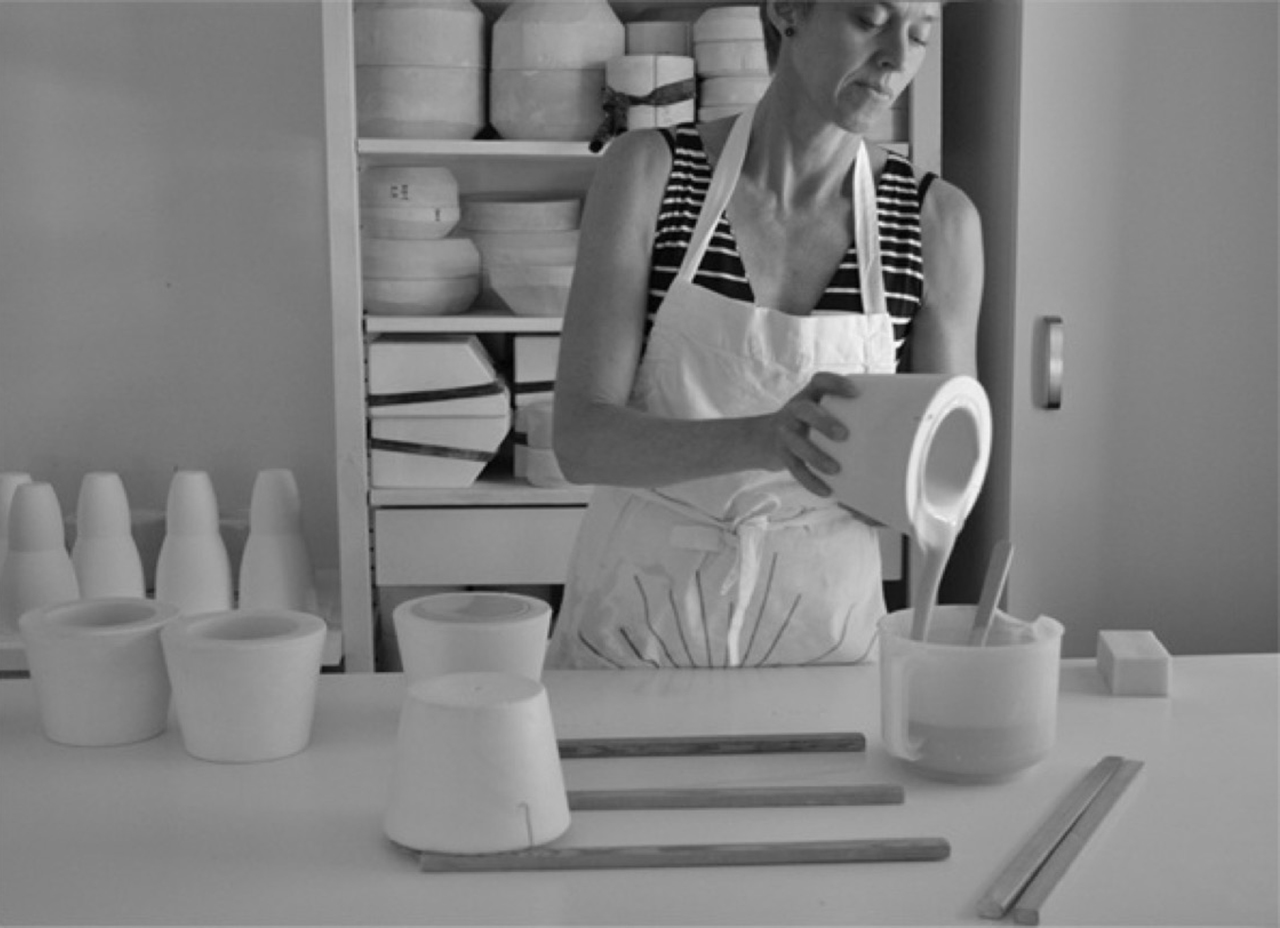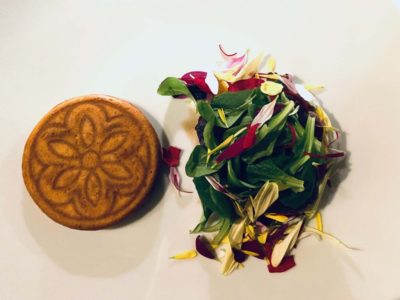If you had the opportunity through your work to accompany thousands of people through their day and make them smile, would you?
Annemette Kissow does just that. How? She designs and produces beautiful porcelain tableware, the shape of which is simple in its elegance, elegant in its simplicity: pure harmony.
She started as a ceramic student at the Danish School of Design from which she graduated in 1995 with an artistic career in mind. With five of her classmates she found a location in a quiet area near the King’s Garden, which they used as a studio, and the large, bright windows on the corner presented their works of art. The state provided a business grant and support for the first two years, but it became clear that their artistic creations would not be enough to support them. While some decided to continue into art, she and a colleague, Ditte Fisher, decided to pivot into everyday tableware.
The design question she asked herself was clear: how do I make the perfect coffee cup? Her ideation process is being quite rapid, she sketched a shape, one which she wanted simple and functional, straight to the essential, pleasant to hold, and with a bit of a twist. The result was a single cup made of two parts, the proportions of which were perfectly balanced. That perfect coffee cup became the start of her career away from artworks and into tableware.
Friends asking for larger cups got their wishes, and she started designing bowls and plates following the same design concept, always with circles, round shapes, and similar proportions, including drawings on some to make them appealing for children as well, and she got noticed. In 2004 she received the Formland Design Award for her children’s bowls.
A few streets away, chef Rasmus Kofoed was starting his restaurant Geranium and was looking for tableware that would complement his creations. His motto, “sanselig og grøn”, which means sensual and green, or at least the first part of it, seemed to be perfectly incarnated by Annemette’s voluptuous and inviting cups and plates, chef Kofoed would provide the green.
Thus, started a beautiful collaboration that lasts to this day. For example, chef Rasmus Kofoed might ask her to create a saltshaker, a jug for cream or sauces, or a plate that brings out a particular dish that he is developing. Perhaps, as he asked once: simply invert her famous coffee cup and turn it into a ceiling lamp, whose soft, warm light now creates a beautiful ambiance in the restaurant.
In 2019, I was fortunate enough to have lunch at Geranium’s new address by the Common Gardens and found the recipes both inventive and elegant, which is not an obvious combination. Lit by her delicate lamps, I found that the plates and cups were particularly well suited to the chef’s creations. It was after inquiring with the hospitable staff that I discovered that they were Annemette’s work and visited her shop for the first time shortly thereafter.
The first things you notice about her are her blue eyes and her smile, then, her humility. She is kind and welcoming, happy to show her works and explain the ideation behind the various pieces she has made. Her main purpose is quite simply to bring beauty to people’s homes and make them happy. Indeed, I have purchased several of her cups, plates, bowls and even candle holders, and they do make me smile every time I use them, which is daily.
To be honest, I did wonder whether the novelty of this pattern would wear off with time. Instead, and as they have at the restaurant Geranium, her pieces have become classics. As she worked on developing other pieces of the same line, she studied her original design with care and found that her instinct seemed to have brought about the perfect proportions, which she has respected since.
She was also approached by Vipp, who have reproduced her products on a very large scale and asked her also to make glasses following the same pattern. She did so, and one day decided to cast the clay in the same mould as the glasses. Unlike glass, porcelain shrinks upon firing, and the result was a perfectly proportioned espresso cup!
Her main business is truly her collaboration with chefs, and her link with Geranium is still the strongest. Chef Rasmus Kofoed has the particularity of having won over the years bronze, silver and gold at the Bocuse d’Or, and he is now a mentor and judge. On the occasion of a new competition, they might approach Annemette with a shape that is 3D printed, asking her to make it in porcelain.
As for her, she prefers to make the moulds herself, in plaster, by hand. It is pleasant to work with and easy to shape once you have the right material she says, and I would add: once you have the right experience. Since it is necessary to create a new mould every 100 pieces, I expect that she has precisely plenty of experience making them.
For new pieces as well, she makes a quick sketch, followed by a first try that is usually final, just as she did for that famous coffee cup. It is easy to forget, once a design has become a classic, how groundbreaking it was. At the time, it was very modern to create this poetic, organic two-part shape without glazing it. Glaze is forgiving, unglazed porcelain needs to have particularly clean lines, and once polished it can become beautifully soft to the touch. The word ergonomic sounds almost clinical when compared to the intuitive feel of holding her cups.
With a simple signature at the bottom of the creations, she completes an aesthetic shape which gracefully continues to nestle in my hands every morning.
Annemette Kissow: http://www.annemettekissow.dk, Geranium: https://www.geranium.dk/en/


